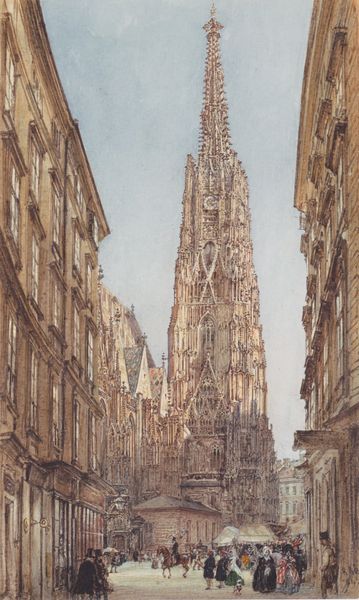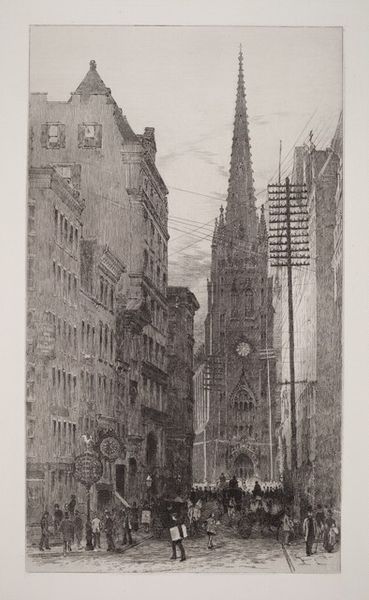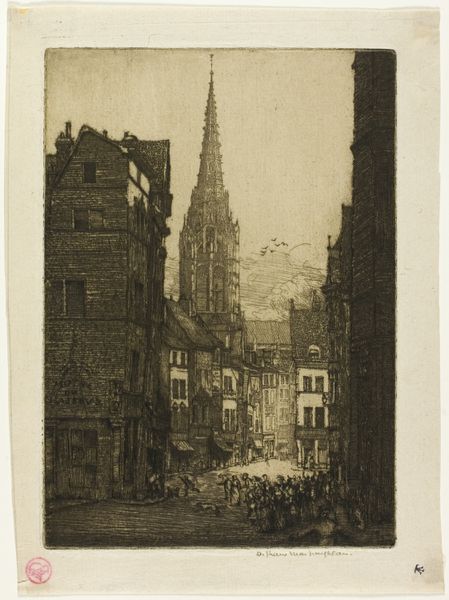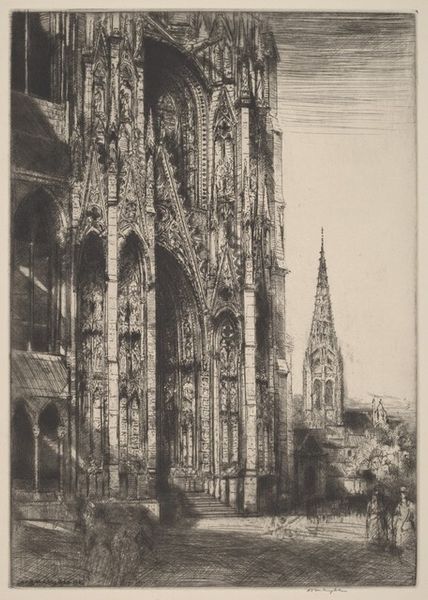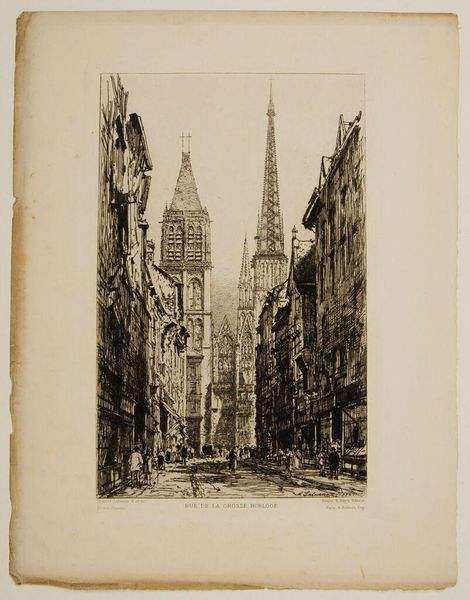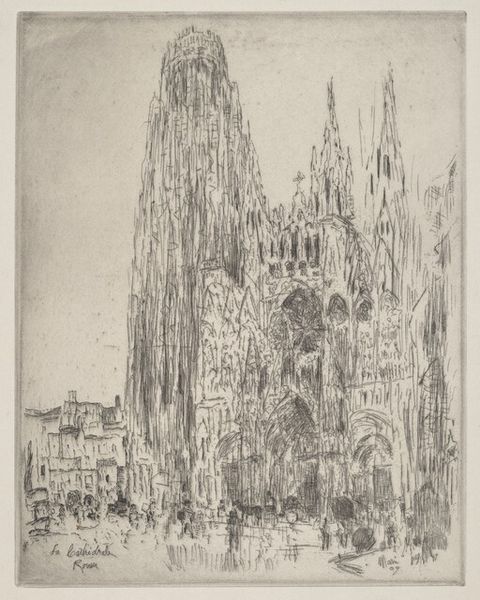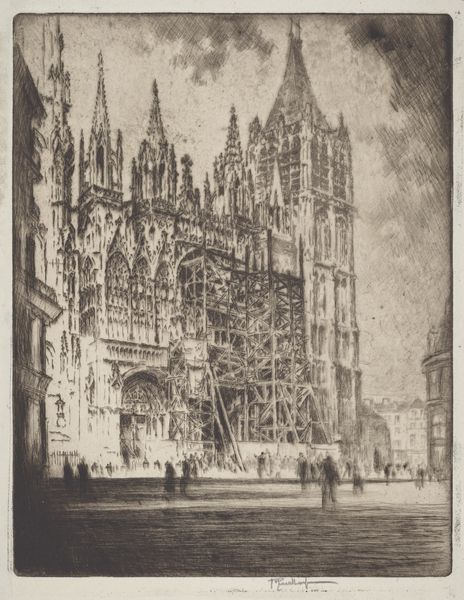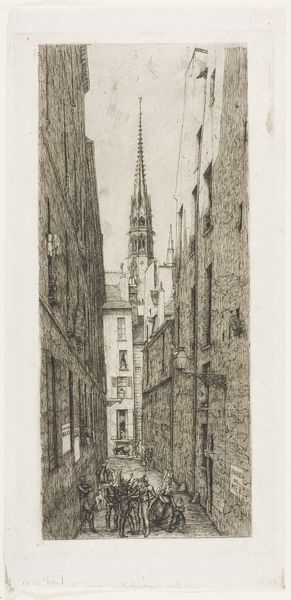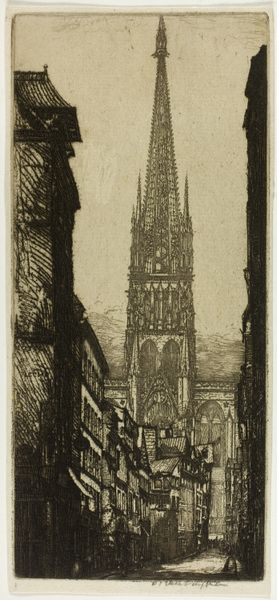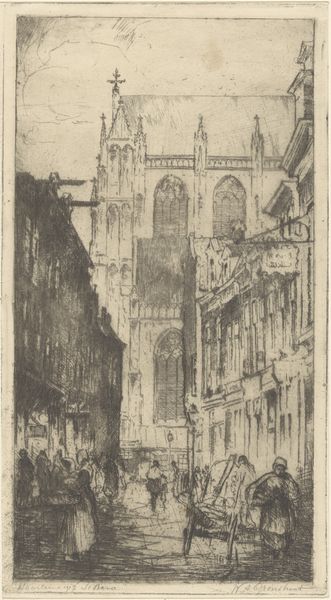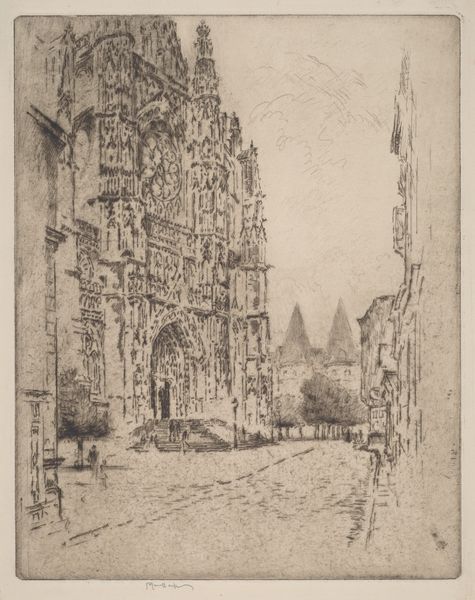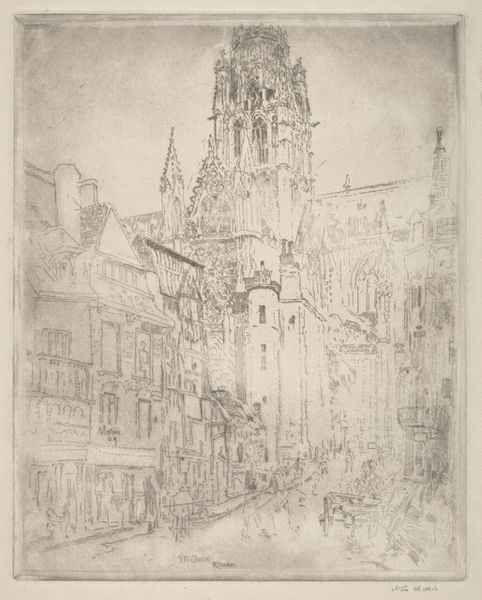
#
architectural sketch
#
landscape illustration sketch
#
mechanical pen drawing
# print
#
pen sketch
#
pencil sketch
#
sketchwork
#
pen-ink sketch
#
pen work
#
architecture drawing
#
environment sketch
Dimensions: plate: 37.15 × 22.23 cm (14 5/8 × 8 3/4 in.) sheet: 43.34 x 28.73 cm (17 1/16 x 11 5/16 in.)
Copyright: National Gallery of Art: CC0 1.0
Curator: This print, titled "Quimper," was created in 1935 by Samuel Chamberlain. It’s an architectural sketch rendered with fine linework. What's your initial take? Editor: I'm struck by how the twin spires of the cathedral dominate the composition, piercing the sky above the close-packed buildings. There's something almost oppressive about their size, dwarfing the human activity below. Curator: That sense of being dwarfed is quite interesting when considering the historical context. Chamberlain made this during the interwar period when Europe was wrestling with its identity. The cathedral, an emblem of long-standing power, overlooks everyday life, embodying this period of transition. We need to ask, whose lives and which past are enshrined in the space of the artwork? Editor: It certainly presents a power dynamic. The architecture itself, the way the buildings seem to lean in, frames the daily lives in Quimper, visually reinforcing established hierarchies of social space and access. This prompts me to think of gendered spaces and access: who would be more likely to have access and mobility here? How might the rigid construction restrict and constrain bodies? Curator: Yes, and if you look closer at the figures populating the scene, there seems to be a lack of individualism and uniformity among them. What commentary is being made about individuality, or the constraints imposed by these imposing structures of European society? Editor: It's compelling how the precise technique emphasizes detail, yet mutes any sort of emotive expression among the figures. This, paired with the sheer verticality and precision of line, brings to mind how cityscapes throughout the period are shaped through displays of both structural power and restricted personal autonomy. Curator: Thinking of it from that viewpoint offers insightful analysis into the political commentary embedded within urban depictions. Editor: It allows for consideration of societal dynamics, like power, individuality and even constraints through a simple observation. Curator: Exactly. Through considering these narratives, the artist creates an observation that encourages further reflection.
Comments
No comments
Be the first to comment and join the conversation on the ultimate creative platform.
